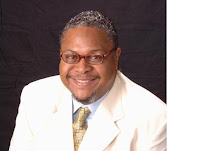It's a good thing that advisors aren't paid to predict the future because, well, nobody
seems to be doing a very good job of it lately. I hope you'll remember this as all the
major financial magazines come out with their yearly "Here's what will happen in 2010"
cover stories.
Reading through some back issues, we find that at this time two years ago, nobody,
anywhere, was predicting a 4th quarter meltdown in the investment markets, or the
global economy tottering on the edge of disaster. In fact, not a one of the
prognosticators seems to have realized that the U.S. economy had already fallen into a
recession.
If you read the magazine issues in early September, right before the markets suddenly
went into a 400-point free-fall in two trading days (triggered, you probably remember, by
the collapse of Lehman Brothers, the AIG bailout and the federal rescue of Fannie Mae
and Freddie Mac), you realize that nobody had a clue that a storm was brewing on the
horizon. The Wall Street Journal talked confidently about Lehman's efforts to secure a
line of credit or divest some assets, and the consensus seemed to be that the damage
from the burst housing bubble had been safely contained. Postmortem articles about
the crisis show that the Federal Reserve Chairman Ben Bernanke and Treasury
Secretary Hank Paulson, who both watch the economic numbers DAILY, were caught
totally flat-footed.
Closer to home, in January of 2009, economists and pundits were talking about the
possibility of a sustained market drop similar to the slow investment torture the
Japanese have experienced since 1989. Kiplinger's magazine identified the people
who had been most right in their 2008 predictions and asked them what they thought
was going to happen in 2009. Not a one of them predicted what actually happened: a
dramatic rise in stock prices (the S&P 500 touched bottom on March 6 with an intraday
price of 666.79 and rose to over 1,100 currently), a sharp (albeit temporary) rise in the
dollar and an end to the economic recession--what economists are now describing as a
jobless recovery.
Here's what they actually said. David Tice, chief equity strategist for Federated
Investors, told the magazine's readers that "The dollar will decline, and it's very possible
that inflation will pick up. The S&P 500 index could easily fall to 450 or so. This will be a
longer-term decline," he added, and gave the worst advice possible for investors over
the next three quarters, saying that "Investors should be selling equities and conserving
cash."
Bob Rodriguez and Tom Atteberry, of First Pacific Advisors, confidently predicted that:
"The upturn won't come until 2010, and when it does, it will look very sluggish and
lethargic."
Economist Nouriel Roubini told Kiplinger readers: "I expect that the recession will be
very severe and that it won't be over before the end of 2009. I think there is a further
15% to 20% downside risk for global and U.S. stocks, and a further 15% to 20%
downside risk for commodity prices. So 2009 will be a year of recession and deflation."
Peter Schiff, president of Euro Pacific Capital, missed the appreciation of the dollar, the
dramatically low interest rates and the economic recovery--all in a couple of sentences.
"The dollar is going to resume its fall," he said, "leading to a resurgence in the bull
market in commodities. That will pierce the bubble in the bond market, causing interest
rates to go up. So we're going to be in a depressionary environment, but with rising
prices and rising interest rates. Our economy will be a mess for years and years to
come."
The worst advice was being given right at the bottom in March, when global stock prices
were about to reward patient investors with an amazing rally. Consider this evaluation
from the March 5 issue of Business Week magazine:
All told, more than $10 trillion of stock market wealth has vanished, and with it the
confidence that springs from financial security. "We are looking at a 60% to 70%
chance that this bear market is not over," says Robert D. Arnott, chairman of Research
Affiliates, a Pasadena (Calif.) firm that manages $25 billion.
The article went on to predict "more debt busts and government trial and error until
things get set right again. That could mean two more years of bouncing around and
then another six or so before the Dow is back above 14,000. Not long ago, such an
outcome would have seemed unimaginably bleak. Given the other possibilities, it
doesn't seem so bad now."
The hardest part about investing is controlling the natural urge to sell when the market
has cratered, or to buy when the market is euphoric. But that's like going to the mall
and waiting to buy until all the sales are over and prices have gone up, and then, as
soon as the store has its next 25% off sale, going back and selling whatever you
bought. Nobody would even think of doing that with their holiday gift purchases, but it's
normal behavior in the investment markets.
The unhappy truth is that nobody can foresee the future, and the investment markets
tend to be far less predictable than other areas of our lives. Like it or not, we venture
blindly forth every day, control what we can control (investment costs, taxes and
savings rates), and generally make more money in the upturns than we lose in the
downturns. Years ago, a pundit threw up his hands and said: "I don't know what the
markets will do tomorrow, or next week, or next month. But I do know, with certainty,
which direction the next 100% movement in the markets will be."
There, finally, is a prediction I can endorse.
© Copyright 2009, Advisor Perspectives, Inc. All rights reserved.




No comments:
Post a Comment